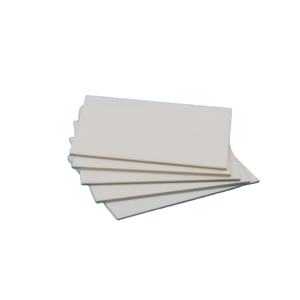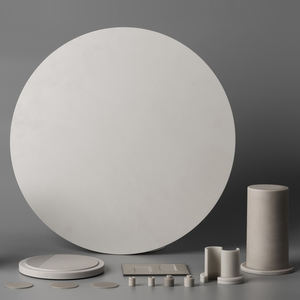Discover Premium Ceramic Products | Durability & Elegance United | Advanced Ceramics
PRODUCT PARAMETERS
Description
Overview of aluminum nitride ceramics
Aluminum Nitride Ceramic is an advanced ceramic material with aluminum nitride as the main component. It has been widely used in electronics, optics, and mechanics due to its unique properties.
Features of aluminum nitride ceramics
High thermal conductivity: Aluminum nitride ceramics have relatively high thermal conductivity, usually between 170-260 W/m·K, which makes it an excellent heat dissipation material. It is especially suitable for electronic devices that require efficient heat dissipation, such as substrate materials for power semiconductor devices.
Good electrical insulation: Despite its high thermal conductivity, aluminum nitride ceramics are excellent insulators of electricity, which can effectively prevent current leakage and ensure the safe operation of electronic components.
Low dielectric constant and dielectric loss: These characteristics make aluminum nitride ceramics very suitable for use in high-frequency circuits because it can reduce energy loss during signal transmission.
High temperature resistance: Aluminum nitride ceramics can maintain structural stability and strength at extremely high temperatures. Its melting point is about 2800°C, so it is suitable for applications in high temperature environments.
Low thermal expansion coefficient: Compared with semiconductor materials such as silicon, aluminum nitride has a lower thermal expansion coefficient, which means it has better dimensional stability when the temperature changes, which helps improve packaging reliability.
Corrosion resistance: Aluminum nitride ceramics have good chemical stability to most molten metals and are not easily oxidized or corroded, allowing them to perform well in harsh environments.
High mechanical strength: Although not as hard as some other types of ceramic materials, aluminum nitride ceramics still provide enough mechanical strength to allow them to be used in many structural applications.
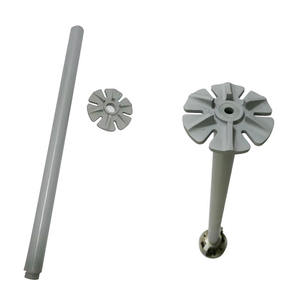
(High Thermal Conductivity Aluminum Nitride AlN Ceramic Discs)
Specifications of High Thermal Conductivity Aluminum Nitride AlN Ceramic Discs
High Thermal Conductivity Aluminum Nitride (AlN) Ceramic Discs deliver superior performance in advanced technical applications. These discs use aluminum nitride ceramic material known for excellent thermal conductivity. The thermal conductivity reaches 170-220 W/m·K. This value exceeds traditional alumina ceramics. The high thermal conductivity allows efficient heat dissipation. It is ideal for electronic components requiring thermal management.
The material structure is dense and uniform. Purity levels exceed 99% with minimal impurities. This ensures stable mechanical and thermal properties. The discs operate in temperatures up to 1300°C. They resist thermal shock and chemical corrosion. These traits suit harsh environments.
Standard disc diameters range from 10 mm to 150 mm. Thickness options span 0.5 mm to 15 mm. Custom sizes are available. Tolerances for diameter and thickness stay within ±0.5% and ±1%. Surface roughness (Ra) measures below 0.4 μm. Smooth surfaces improve bonding with metals or polymers.
Electrical insulation is a key feature. Volume resistivity exceeds 10¹⁴ Ω·cm. Dielectric strength surpasses 15 kV/mm. These properties prevent electrical leakage. They support high-frequency applications. The low dielectric loss (tan δ < 0.001) ensures signal integrity. Applications include heat sinks, LED substrates, and power module bases. They serve semiconductor processing equipment and laser diode carriers. The discs function in aerospace and automotive electronics. High thermal conductivity reduces device operating temperatures. This extends component lifespan. Metallization options include gold, silver, or copper coatings. These layers enable soldering or brazing. They create reliable connections in circuit assemblies. Plating processes follow industry standards. They ensure adhesion strength and durability. Mechanical properties include flexural strength over 300 MPa. Hardness reaches Hv 1200. The material resists wear and abrasion. It maintains structural integrity under mechanical stress. Packaging uses vacuum-sealed anti-static materials. Bulk orders include protective foam or custom trays. Each disc undergoes strict quality checks. Tests cover dimensions, surface quality, and performance metrics. Customization supports specific requirements. Options include holes, grooves, or unique geometries. Technical support assists with design and material selection. Samples are available for evaluation. Lead times vary by order size and complexity.
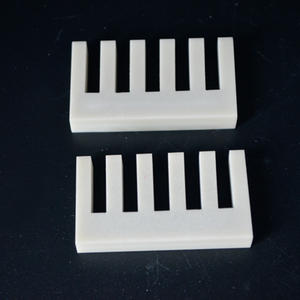
(High Thermal Conductivity Aluminum Nitride AlN Ceramic Discs)
Applications of High Thermal Conductivity Aluminum Nitride AlN Ceramic Discs
High thermal conductivity aluminum nitride (AlN) ceramic discs handle heat well. They move heat away from sensitive parts fast. This makes them useful in many industries. Electronics need parts that manage heat. AlN discs cool power electronics like IGBTs and MOSFETs. They stop devices from overheating. This improves performance. LED lighting systems use these discs. High-power LEDs create lots of heat. AlN spreads the heat quickly. This keeps LEDs bright and lasting longer. Semiconductor manufacturing relies on AlN. Wafer processing requires stable temperatures. AlN ceramic discs work in high-temperature environments. They stay reliable during etching or deposition steps. Radio frequency (RF) devices use AlN. RF amplifiers generate heat during operation. AlN discs remove heat efficiently. This prevents signal loss. Laser diodes need precise temperature control. AlN ceramic discs stabilize temperatures. This ensures consistent laser output. Electric vehicles use AlN in power modules. Battery systems and inverters produce heat. AlN discs protect components from damage. This boosts vehicle safety. Aerospace applications benefit from AlN. Satellites and avionics need lightweight materials. AlN is light and handles thermal stress. It works in extreme conditions. Medical equipment uses AlN for imaging devices. X-ray tubes and MRI machines need heat control. AlN discs maintain accuracy. They resist corrosion and wear. AlN works better than traditional materials. Aluminum oxide conducts less heat. Beryllium oxide is toxic. AlN is safe and efficient. These discs come in custom sizes. They fit specific industrial needs. Surface finishes or metal coatings add functionality. AlN ceramic discs solve heat problems. They keep systems running smoothly. Industries trust them for critical applications.
Company Introduction
Advanced Ceramics founded on October 17, 2014, is a high-tech enterprise committed to the research and development, production, processing, sales and technical services of ceramic relative materials and products.. Since its establishment in 2014, the company has been committed to providing customers with the best products and services, and has become a leader in the industry through continuous technological innovation and strict quality management.
Our products includes but not limited to Silicon carbide ceramic products, Boron Carbide Ceramic Products, Boron Nitride Ceramic Products, Silicon Carbide Ceramic Products, Silicon Nitride Ceramic Products, Zirconium Dioxide Ceramic Products, Quartz Products, etc. Please feel free to contact us.(nanotrun@yahoo.com)

Payment Methods
T/T, Western Union, Paypal, Credit Card etc.
Shipment Methods
By air, by sea, by express, as customers request.

5 FAQs of High Thermal Conductivity Aluminum Nitride AlN Ceramic Discs
High Thermal Conductivity Aluminum Nitride AlN Ceramic Discs are advanced materials used in electronics. They manage heat efficiently. They are made from aluminum nitride powder. This powder is sintered at high temperatures. The discs have high thermal conductivity. They also have strong electrical insulation. They resist wear and corrosion.
People often ask what thermal conductivity AlN ceramic discs offer. These discs have a thermal conductivity of 170-200 W/mK. This is much higher than alumina ceramics. Alumina ceramics typically have 20-30 W/mK. Aluminum nitride is closer to beryllia in performance. Beryllia has around 280 W/mK. But beryllia is toxic. Aluminum nitride is safer.
Many want to know where these discs are used. They are common in electronics. Examples include LED lighting and semiconductor devices. They are used in power modules for electric vehicles. They handle heat in aerospace systems. Industrial equipment uses them for high-temperature stability.
People ask why choose AlN over aluminum oxide or metals. Aluminum nitride transfers heat better than aluminum oxide. It insulates electricity better than metals like copper. It resists thermal shock. It works in extreme temperatures. It does not corrode easily. It is lighter than metals. It lasts longer under stress.
A frequent question is about handling AlN ceramic discs. The material is stable but brittle. Avoid dropping or applying sudden force. Machining requires diamond tools. Standard tools wear out quickly. No special storage is needed. Keep them dry. Avoid contact with strong acids or alkalis. They can damage the surface.
Another common question is about temperature limits. AlN discs handle up to 1000°C in air. In inert gases they withstand 1400°C. Thermal cycling does not crack them. They expand minimally when heated. This prevents stress in devices.
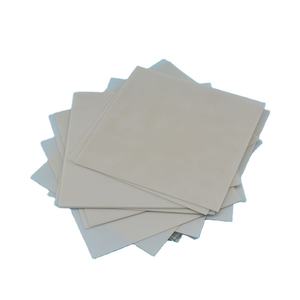
(High Thermal Conductivity Aluminum Nitride AlN Ceramic Discs)
REQUEST A QUOTE
RELATED PRODUCTS
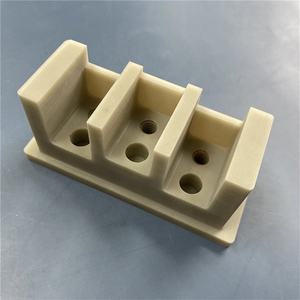
High Quality 99.9% Aluminum Nitride Powder AlN Powder for Ceramics and Semiconductor CAS 24304-00-5
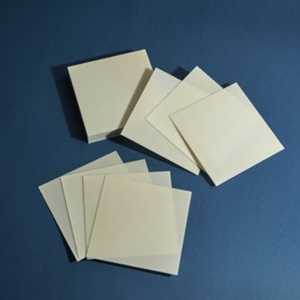
Whole Industrial Machined Hot Pressed Aln Aluminum Nitride Ceramic Structural Parts
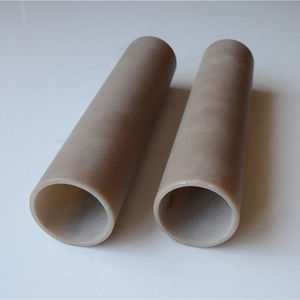
High Thermal Conductivity Aluminium Nitride Ceramic Substrate AlN Ceramic Shim Chip Wafer Sheet

High Purity AlN Aluminium Nitride AlN Ceramic Rod Tube Bushing for Structure Ceramic Customizable Cutting

Thermal Conductive Sheet AlN Aluminum Nitride Ceramic Substrate
